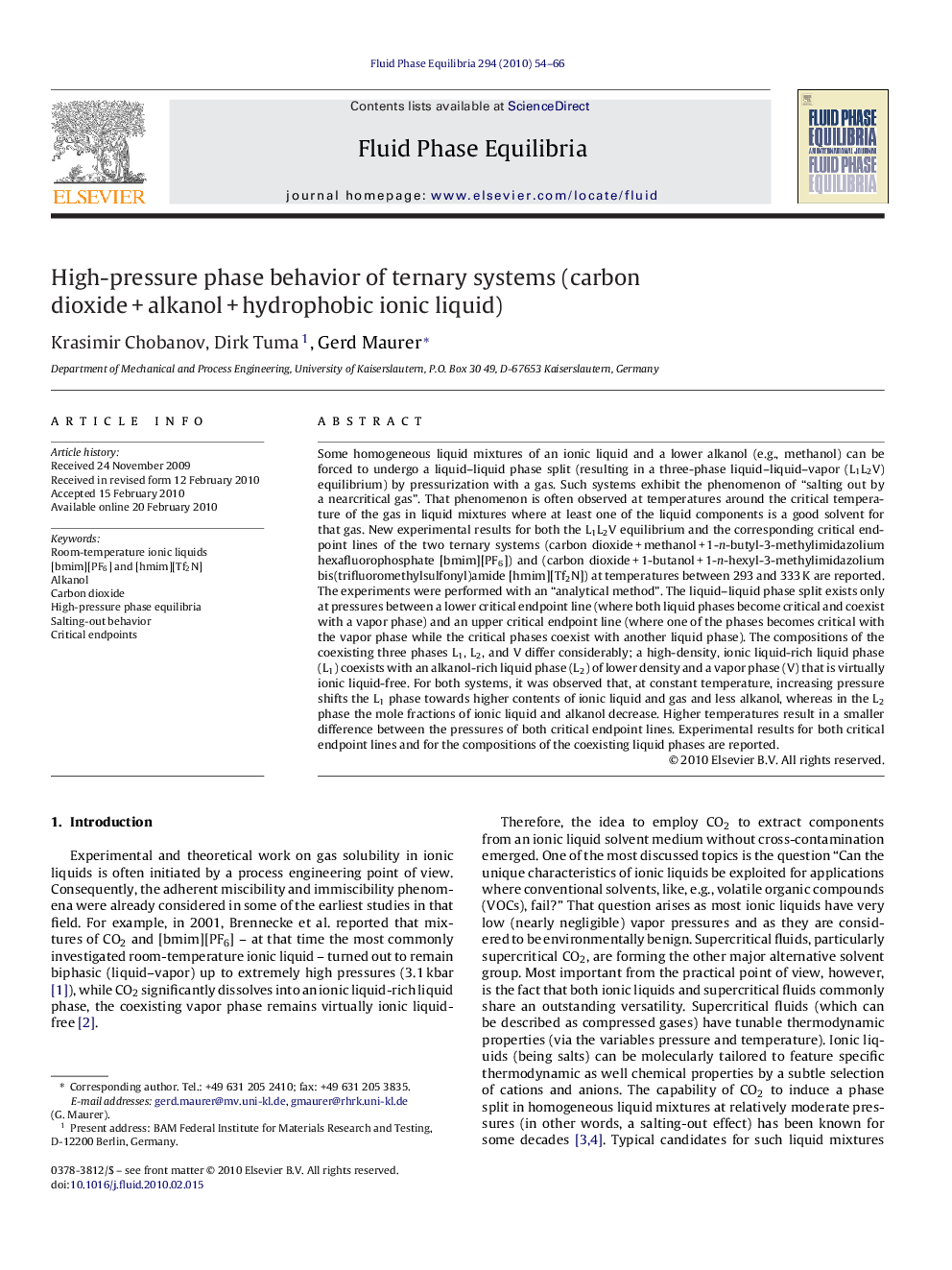| کد مقاله | کد نشریه | سال انتشار | مقاله انگلیسی | نسخه تمام متن |
|---|---|---|---|---|
| 204582 | 460750 | 2010 | 13 صفحه PDF | دانلود رایگان |

Some homogeneous liquid mixtures of an ionic liquid and a lower alkanol (e.g., methanol) can be forced to undergo a liquid–liquid phase split (resulting in a three-phase liquid–liquid–vapor (L1L2V) equilibrium) by pressurization with a gas. Such systems exhibit the phenomenon of “salting out by a nearcritical gas”. That phenomenon is often observed at temperatures around the critical temperature of the gas in liquid mixtures where at least one of the liquid components is a good solvent for that gas. New experimental results for both the L1L2V equilibrium and the corresponding critical endpoint lines of the two ternary systems (carbon dioxide + methanol + 1-n-butyl-3-methylimidazolium hexafluorophosphate [bmim][PF6]) and (carbon dioxide + 1-butanol + 1-n-hexyl-3-methylimidazolium bis(trifluoromethylsulfonyl)amide [hmim][Tf2N]) at temperatures between 293 and 333 K are reported. The experiments were performed with an “analytical method”. The liquid–liquid phase split exists only at pressures between a lower critical endpoint line (where both liquid phases become critical and coexist with a vapor phase) and an upper critical endpoint line (where one of the phases becomes critical with the vapor phase while the critical phases coexist with another liquid phase). The compositions of the coexisting three phases L1, L2, and V differ considerably; a high-density, ionic liquid-rich liquid phase (L1) coexists with an alkanol-rich liquid phase (L2) of lower density and a vapor phase (V) that is virtually ionic liquid-free. For both systems, it was observed that, at constant temperature, increasing pressure shifts the L1 phase towards higher contents of ionic liquid and gas and less alkanol, whereas in the L2 phase the mole fractions of ionic liquid and alkanol decrease. Higher temperatures result in a smaller difference between the pressures of both critical endpoint lines. Experimental results for both critical endpoint lines and for the compositions of the coexisting liquid phases are reported.
Journal: Fluid Phase Equilibria - Volume 294, Issues 1–2, 15 July 2010, Pages 54–66